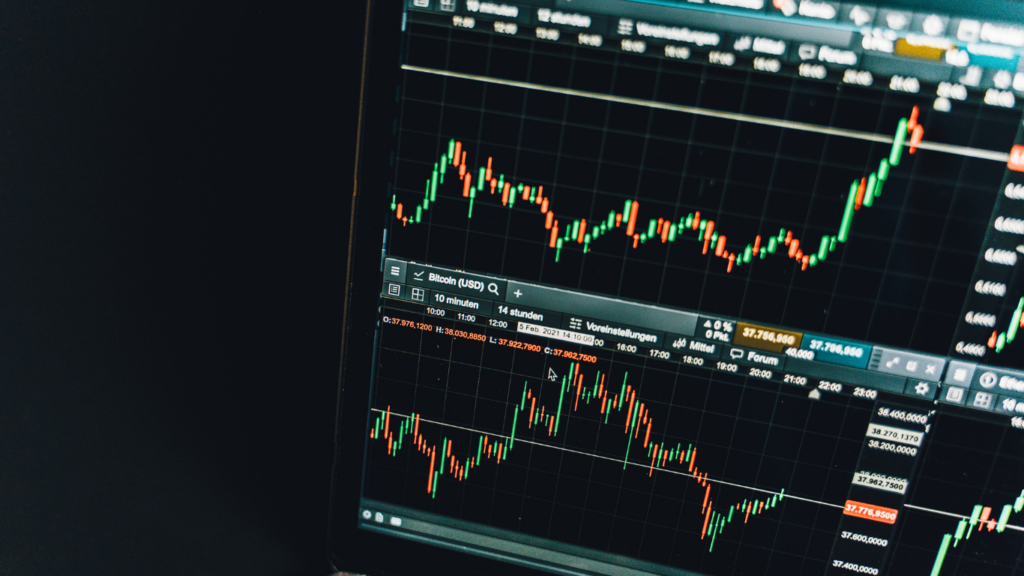Understanding Market Momentum
Market momentum refers to the speed and strength of a price movement in financial markets. As an investor, I look at both the direction and magnitude of these movements to gain insights into potential future trends. Rapid price changes often indicate high momentum, suggesting strong interest from traders.
To assess market momentum, I consider several key indicators. One common tool is the Moving Average Convergence Divergence (MACD) indicator, which signals buy or sell opportunities based on the convergence or divergence of moving averages. An increasing MACD line often suggests bullish momentum, while a decreasing line may indicate bearish sentiment.
Another essential indicator is the Relative Strength Index (RSI). This tool measures the speed and change of price movements, providing insight into overbought or oversold market conditions. An RSI above 70 generally signifies that an asset may be overbought, while an RSI below 30 indicates it might be oversold.
Trading volume also plays a crucial role in understanding momentum. If a significant price movement occurs on high volume, it’s more likely to reflect genuine market sentiment. On the other hand, low-volume movements might not have lasting impact.
These indicators, along with candlestick patterns and trend lines, offer valuable insights. By analyzing them, I can better understand market momentum and make informed trading decisions.
Key Indicators of Momentum Shifts

Identifying momentum shifts involves understanding key indicators. These indicators provide insights into the market’s current and future directions.
Moving Averages
Moving averages smooth out price data to identify trends. A short-term average crossing above a long-term average often signals a bullish momentum shift, while the opposite indicates bearish momentum. I use the 50-day and 200-day moving averages to detect these crossovers. The exponential moving average (EMA) reacts more quickly to recent price changes, offering timely insights.
Relative Strength Index (RSI)
The RSI measures the speed and change of price movements, indicating potential reversals. RSI values above 70 suggest overbought conditions, while values below 30 indicate oversold markets. I find that combining RSI with other indicators enhances its predictive power, allowing me to spot divergences that may precede momentum shifts.
Volume Analysis
Volume analysis assesses the strength of price movements based on trading volume. High volume during price increases supports upward momentum, while high volume with falling prices suggests a bearish trend. In my strategy, unusually high or low volumes often signal an impending change in market sentiment. By monitoring volume alongside moving averages and RSI, I gain a more comprehensive view of potential momentum shifts.
Chart Patterns That Indicate Momentum Changes
Certain chart patterns signal potential momentum changes in the market, aiding in better investment decisions.
Head and Shoulders
Head and Shoulders patterns often predict a reversal in trend direction. In an uptrend, the market forms three peaks: a higher peak (the head) flanked by two lower peaks (the shoulders). The neckline, drawn across the two troughs, provides a critical breakout point. When price breaks below this neckline, it’s a bearish signal that momentum is likely shifting downward. In a downtrend, this pattern appears inverted, with the break signaling a bullish reversal.
Double Tops and Bottoms
Double Tops and Bottoms signal possible reversal points. A Double Top forms after a significant uptrend and incorporates two peaks at a similar price level, indicating resistance. When the price falls below the pattern’s base, momentum often shifts bearish. Conversely, a Double Bottom features two similar troughs following a downtrend. Breakouts above the neckline suggest a bullish momentum shift, providing traders with potential entry points.
The Role of News and Events
News and events play a critical role in identifying market momentum shifts. They can cause abrupt changes in asset prices, impacting both short-term moves and long-term trends.
Economic Reports
- Economic reports significantly influence market movements.
- Data releases like GDP growth, unemployment rates, and inflation figures offer insights into economic health.
- When these reports deviate from expectations, they can trigger momentum shifts.
For example, a better-than-expected GDP growth report might lead to bullish momentum in stock markets, while higher-than-anticipated inflation could prompt bearish moves in bonds.
Company Announcements
Company announcements, such as:
- earnings reports
- product launches
- affect stock prices.
These announcements offer real-time insight into a company’s performance and future prospects. Positive earnings surprises often lead to bullish momentum shifts, attracting buyers. In contrast, negative news, like missed earnings targets or product recalls, can lead to bearish momentum, prompting sell-offs. By analyzing these announcements, I find valuable clues on potential market reactions and momentum shifts.
Psychological Factors Influencing Momentum
Momentum shifts in the market often stem from psychological factors impacting traders’ behaviors and decisions. Recognizing these subtle cues can provide a strategic edge.
Investor Sentiment
Investor sentiment reflects the overall mood and attitude of market participants towards specific assets or the market as a whole. High levels of optimism can drive up prices beyond fundamental values, creating bullish momentum. Conversely, pessimism can lead to rapid sell-offs, indicating bearish momentum. Sentiment indicators, like the Put-Call Ratio and the Fear and Greed Index, provide measurable insights into market psychology. Monitoring these can reveal changing momentum before it appears on traditional indicators.
Herd Behavior
Herd behavior occurs when individuals mimic the actions of a larger group, often ignoring their own analysis or market fundamentals. This behavior can amplify momentum shifts, as traders rush to buy in rising markets or sell in falling ones. Observing sharp price movements accompanied by abnormal trading volumes often signals herd behavior. Understanding this psychological tendency helps anticipate potential market overreactions or corrections, offering opportunities to capitalize on momentum shifts.
Tools and Software for Monitoring Market Momentum
Utilizing the right tools and software enhances the ability to accurately identify and react to market momentum shifts. Various platforms and analytical instruments provide traders with the necessary data and insights.
Trading Platforms
Many trading platforms, such as MetaTrader 4 and ThinkorSwim, offer comprehensive features for tracking market movements. These platforms come equipped with customizable charting tools to visualize trends and indicators like MACD and RSI. Automated trading features save time by executing orders based on predefined strategies. Using these platforms helps increase efficiency when tracking market momentum.
Analytical Tools
Several analytical tools, like Bloomberg Terminal and TradingView, are essential in understanding market dynamics. These tools provide in-depth financial data, real-time updates, and reports on economic indicators. Accessing historical data empowers traders to spot patterns and predict momentum changes. By leveraging these analytical tools, you can make informed decisions regarding potential market shifts.

 Juan Saxtonetic’s contributions to Funds Fortune Roll are rooted in his deep understanding of risk management and investment diversification. His innovative approach to analyzing risk and reward scenarios has guided the development of strategies that prioritize balanced decision-making. Juan’s work ensures that users have access to reliable tactics for managing their portfolios effectively, making him an essential part of the platform’s growth.
Juan Saxtonetic’s contributions to Funds Fortune Roll are rooted in his deep understanding of risk management and investment diversification. His innovative approach to analyzing risk and reward scenarios has guided the development of strategies that prioritize balanced decision-making. Juan’s work ensures that users have access to reliable tactics for managing their portfolios effectively, making him an essential part of the platform’s growth.